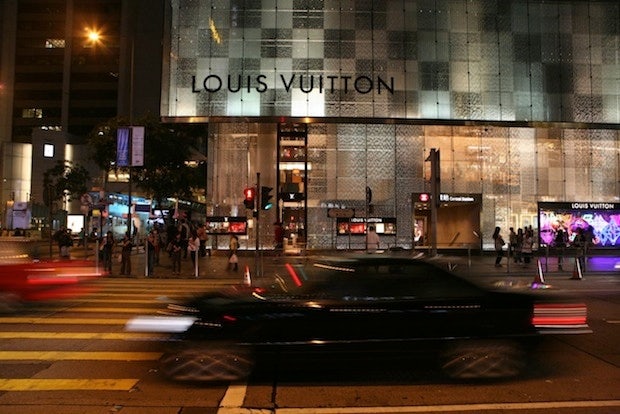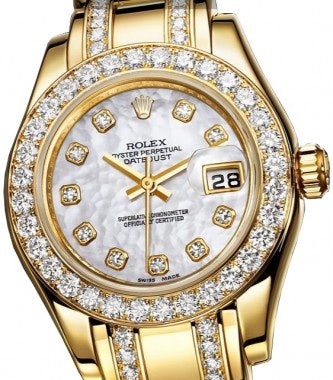Why It’s A Mistake To View The Market As A Monolithic Whole#

A Louis Vuitton shop in Hong Kong. (Stephen Thompson)
Do I contradict myself? Very well, then I contradict myself, I am large, I contain multitudes.
— Walt Whitman, Leaves of Grass
One need only do a Google news search on “China luxury” to gain an appreciation for Whitman’s most famous line and how it applies to China. On a single page of results you will likely find stories about luxury sales in China reaching new heights, dire stories about the coming collapse of the China luxury market, luxury companies growing 30 percent in China and yet others shrinking by 25 percent. This is typical of the information gap corporations face when planning or re-setting their China strategies.
As with many subjects regarding China, from business to culture to politics to consumers, the news feeds often highlight two types of commentary. First, you have the “kowtow crowd” – the pundits and analysts who see the rest of the world bowing down to, and being steamrolled by, the mighty China juggernaut in business, politics and culture. Then you have the “Changites,” named for political analyst Gordon Chang, who has been predicting (and, one suspects, gleefully hoping for) China’s imminent collapse for more than 15 years.
The reality of China is always more complicated and usually lies between these extremes. Some companies are doing well, others are faltering, some categories are growing as others are contracting, but it is a mistake to view “China” as a monolithic whole on the cusp of world domination or imminent collapse.
So what does all this have to do with the price of Prada in Pudong?
Y2K is a crisis without precedent in human history.
— Byte magazine editor Edmund DeJesus, 1998
Luxury companies should not and cannot allow themselves to see a crisis where it does not exist.
There are real and imagined developments in the China luxury market, and some invisible factors that only a few see, which distort the view of the luxury business in China. The following are some key issues that I think need some clarification.
Austerity and Government Action.#
One of the big stories in the China luxury market today is how the government, as part of its crackdown on corruption, graft, and self-enriching officials, is discouraging open displays of wealth and putting a damper on the important “gift giving” culture in China, which is important to luxury companies.

Luxury watches have been hit particularly hard by anti-extravagance measures.
While it is true that this is happening in certain pockets of the luxury market, this is a temporary situation that will recede into memory in the near future. The bigger question is whether China can continue moving its people up the economic ladder from poverty to working class, middle class, to wealthy, and whether it will continue to shift a higher percentage of GDP to consumption and services.
To make decisions that could affect your brand’s China business for the next decade or more based on what the Chinese government is saying and doing right now, without interpreting what these decrees really mean, is shortsighted and will be a losing play in the long run. Many astute observers see this, as I do, as a short-term issue.
There are many examples of heavy breathing by the Chinese government that ends up fading into the background. For instance, some years ago the government banned direct selling and MLM (multi-level marketing) on the mainland. Amway and others might have simply packed up and gone home, as their business model was essentially outlawed. Instead they took a long-term view, worked with the government, adjusted their short-term play, and strategized for the day when the ban would be lifted. Today China is Amway’s #1 global market.
Demographics is Destiny.#
In the long run, China’s sheer size—in economy, population, and as a percentage of global consumer spending—will continue to grow. Even a small portion of China’s overall market is bigger than many markets’ total size. Even if—and it is a big if—the majority of Chinese do not continue moving up the economic ladder, the sheer number of those who have and will continue to do so make China an important market for luxury goods. The balance of consumer spending power is tilting, and will continue to tilt, towards Asia. And China is the fulcrum of the region.
The Global China Consumer.#
This may be the most distorting factor among the lot. Chinese consumers now account for about 27 percent of all global luxury purchases—but almost 60 percent of those purchases are made outside the mainland. This includes Hong Kong, Taiwan, North America, and Europe. Even where some luxury companies see their same-store sales experiencing dips on the mainland, they are more than making up for it in their stores elsewhere.
Smart companies are now differentiating between the “China Market” and the “China Demographic.” The China luxury demographic is mobile (and will reach 100 million outbound travelers by 2020, making it #1 in the world), free-spending (with per capita per trip already at $7,500), and focus their travel spending on shopping—as opposed to Westerners who spend on food, accommodation, and “experiences.”
A recent report in Jing Daily from Sage Brennan of China Luxury Advisors emphasizes the point:
Brands should take advantage of Chinese consumers’ newfound obsession with travel to communicate and showcase their brand heritage and culture in ways that are not possible in China, with its glitzy-glass-and-marble retail environments and ubiquitous luxury fashion shows. Chinese consumers are hungry to learn and experience history and heritage and understand luxury brand quality and workmanship. Utilize these assets to give your customers a truly unique experience that they cannot get in China. They will love your brand all the more for it, and reward you with higher spending across the globe.
In other words, “Ms. Wang” may buy one LV bag per year in Shanghai but three in Hong Kong, four in New York, and six in Paris.
Current luxury sales numbers out of China do not reflect this trend, but smart luxury companies have engaged this reality and taken action to integrate their approach to Chinese consumers on a global level. The Chinese have money, they want to spend it, and they want to spend it on your products, but not always on the mainland.
Online.#
Another related factor that is not currently reflected in Chinese mainland luxury reporting or sales figures is the exponential increase in online luxury spending. China has the largest number of e-consumers in the world and the largest number of luxury buyers, and those two facts are now converging. Some luxury companies have embraced the “online + global China consumer” strategy for growth and are succeeding. Again, much of this is not reflected in mainland sales numbers or mainstream reporting.

"Companies like Coach, Zegna, Michael Kors, and others are increasing sales and profitability by selling affordable luxury."
Affordable Luxury.#
One of the most important trends in China today is the rise of the “affordable” or “accessible” luxury market. As China’s traditional, well-heeled luxury consumers become more experienced, sophisticated, and independent, and as middle class consumers increase their aspirational spends, companies like Coach, Zegna, Michael Kors, and others are increasing sales and profitability by selling affordable luxury. Smart luxury companies must recognize that there is a market for ultra-luxury as well as affordable luxury and address both consumer needs. You can increase prices and offer even more exclusive products while also selling affordable luxury – without losing brand integrity.
There are many other trends feeding the long-term growth of luxury that need deep exploration and understanding that we have not covered here, such as “exclusive experience” global travel spends, increasing desire for American luxury brands, luxury brands re-setting their China strategies (with real results and numbers still one to three years off), and shifts to luxury buying for the home.
In summary, China is a big, complicated market with continental-size diversity. Any attempt to simplify it as an unstoppable force or a luxury market about to collapse is bad strategy. To be sure, there are challenges and obstacles to its continued meteoric rise, but it is equally true that long-term prospects for China as a luxury consumer culture are positive. Luxury companies need to close the information gap, take a middle-ground approach to news and trends, and work on a global China strategy that includes data and trends that lie below the surface.
You don’t want to be the company that shut down operations because the media told you the clocks would stop working and planes would fall out of the sky at 11:59 p.m. on December 31, 1999.
Luxury companies need to read between the lines on news out of China. They need to take a long view of the China global consumer demographic – to think globally and act locally, and to ultimately integrate their China Market and China Demographic strategies into a single overarching plan. That approach will build brand loyalty and increases sales not only in China but in Hong Kong, New York, and Paris.
Michael Zakkour is a principal at the global consulting firm
Tompkins International#
, where he heads the China retail, luxury, and fashion practice. He has more than fifteen years’ experience in international market strategy and implementation, primarily in China and Asia. He has assisted more than 250 multinational and SME companies in their assessment of opportunities in China and their resultant entry and growth strategies and implementation. Email: mzakkour@tompkinsinc.com; Twitter: @michaelzakkour
(Opinions expressed by columnists do not necessarily reflect the views of the Jing Daily editorial team.)